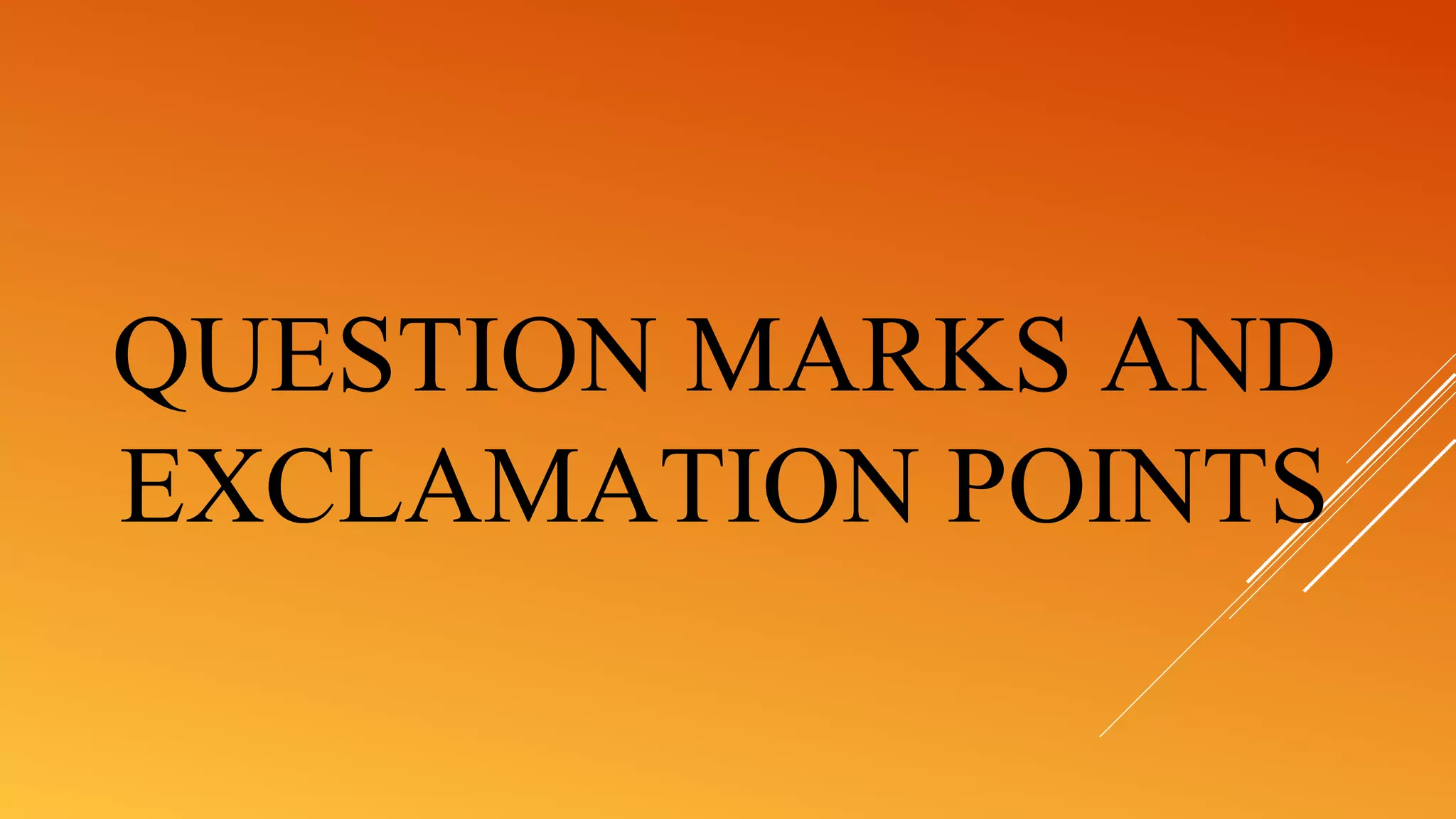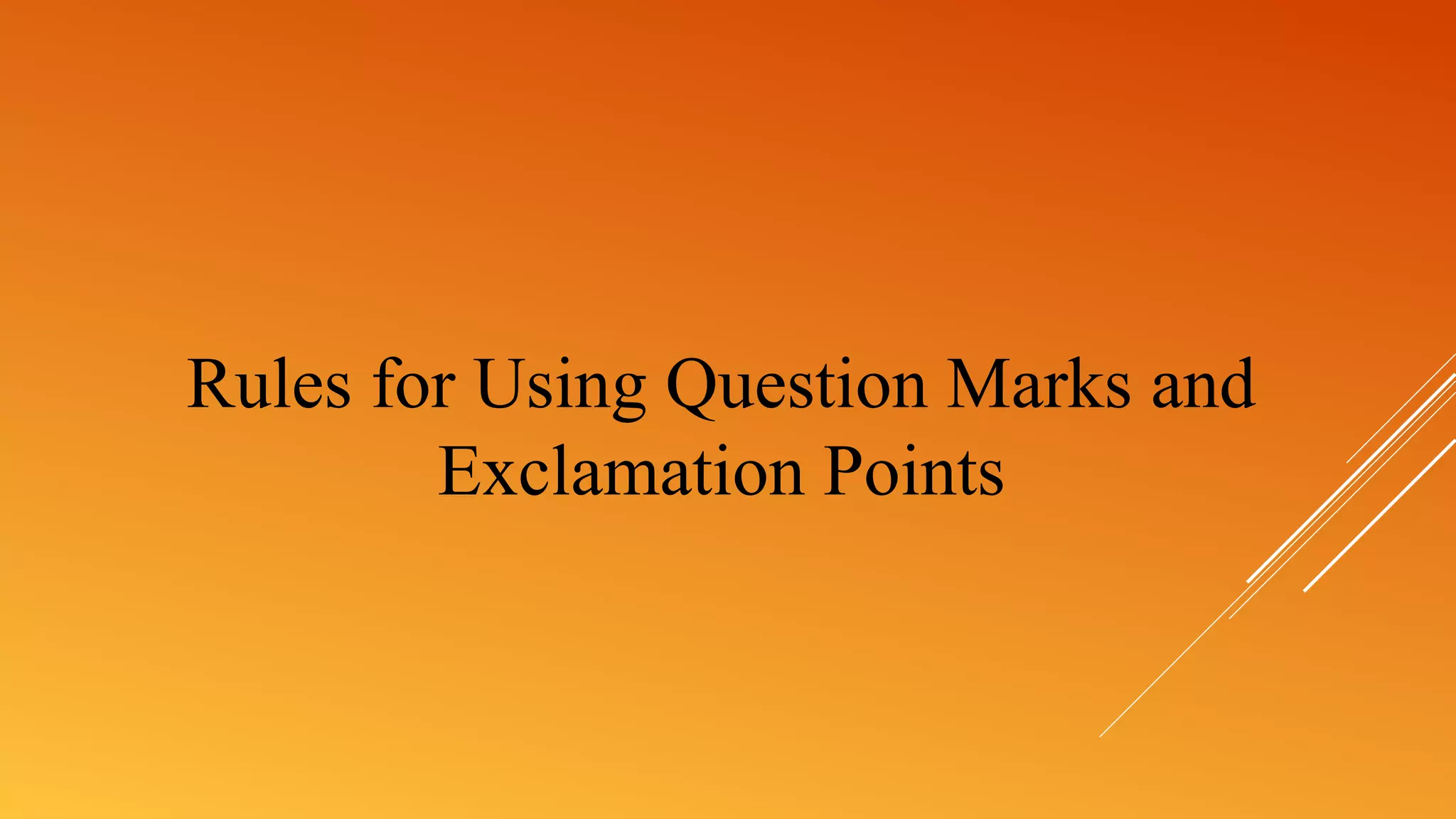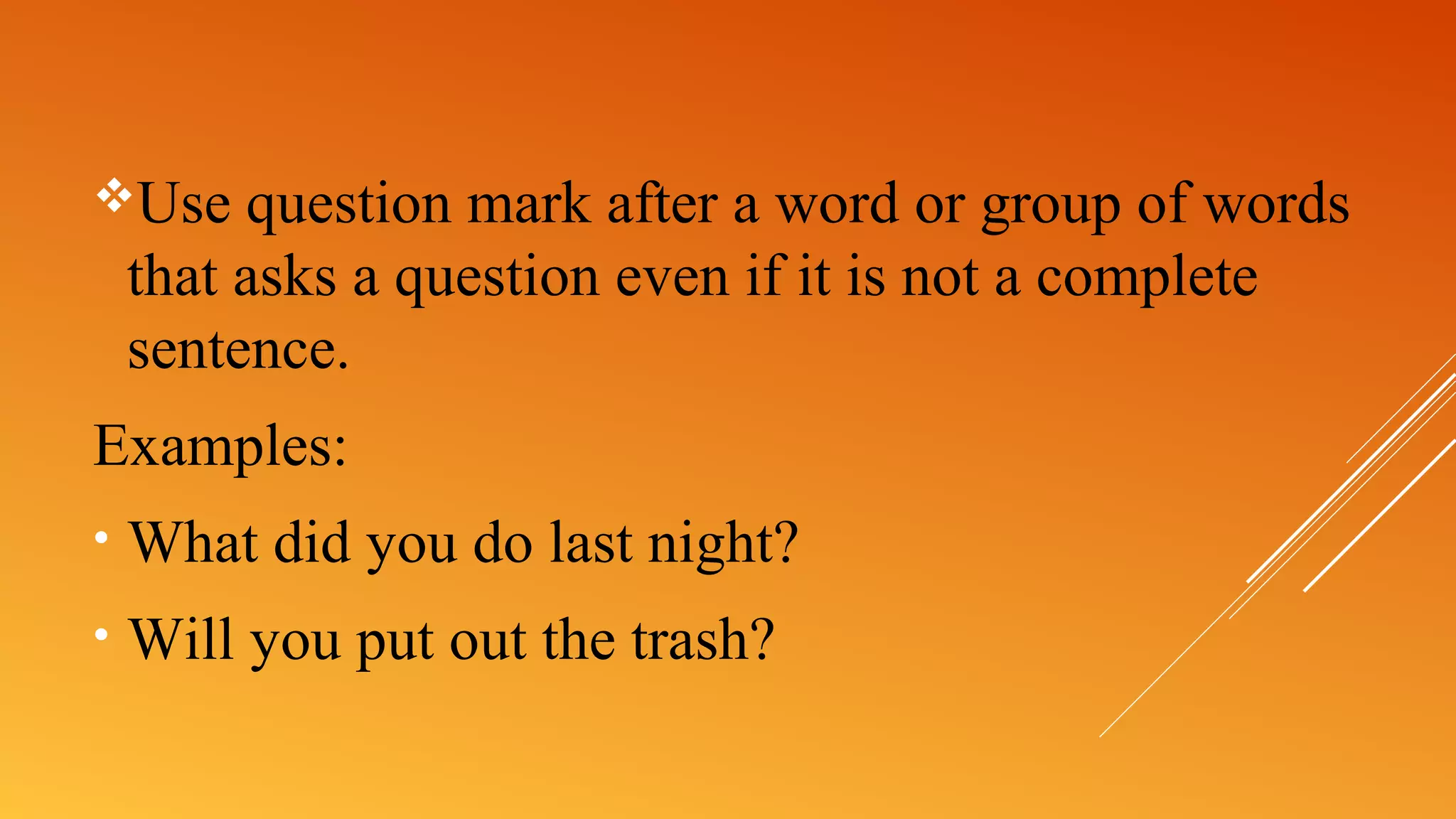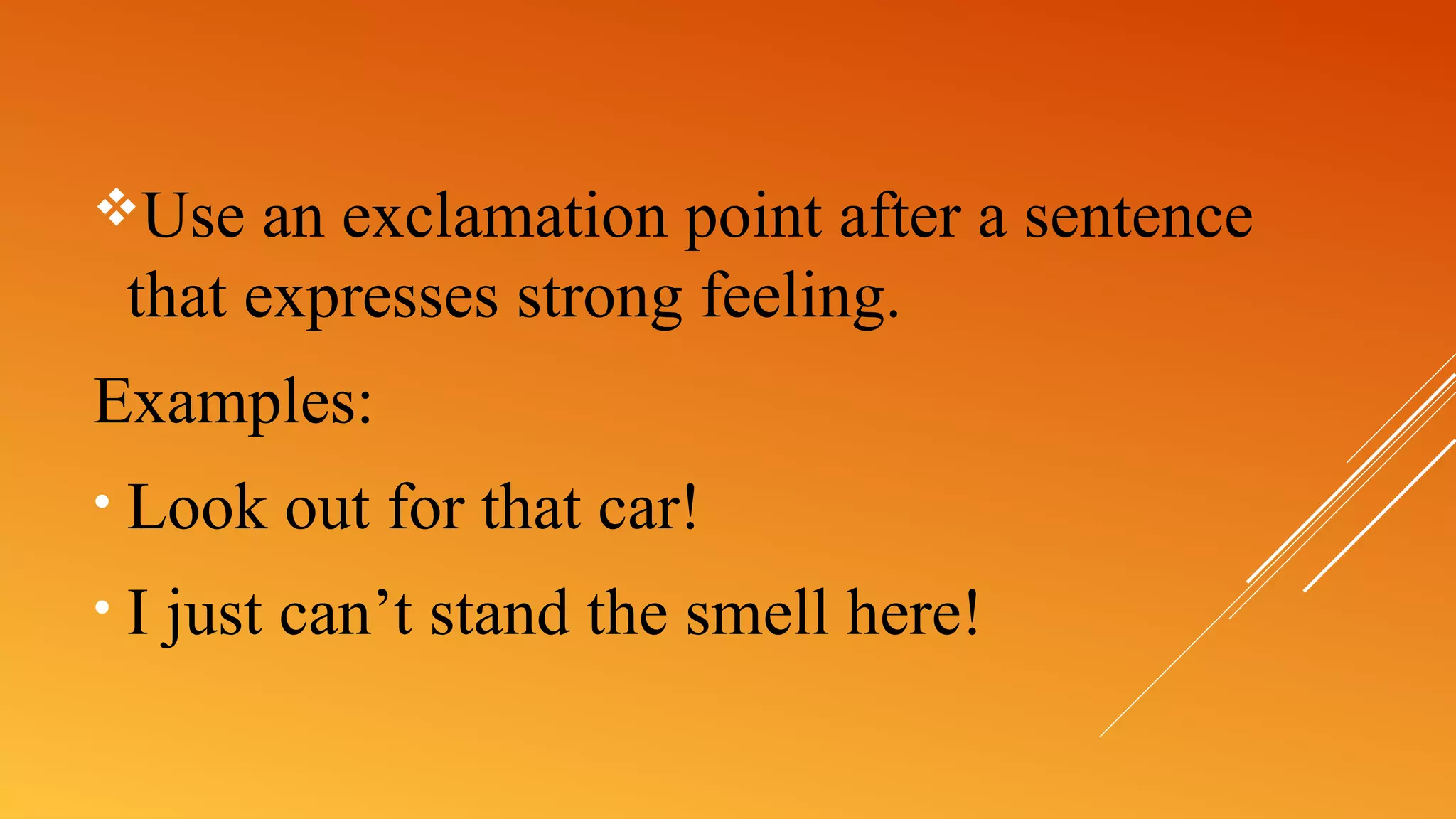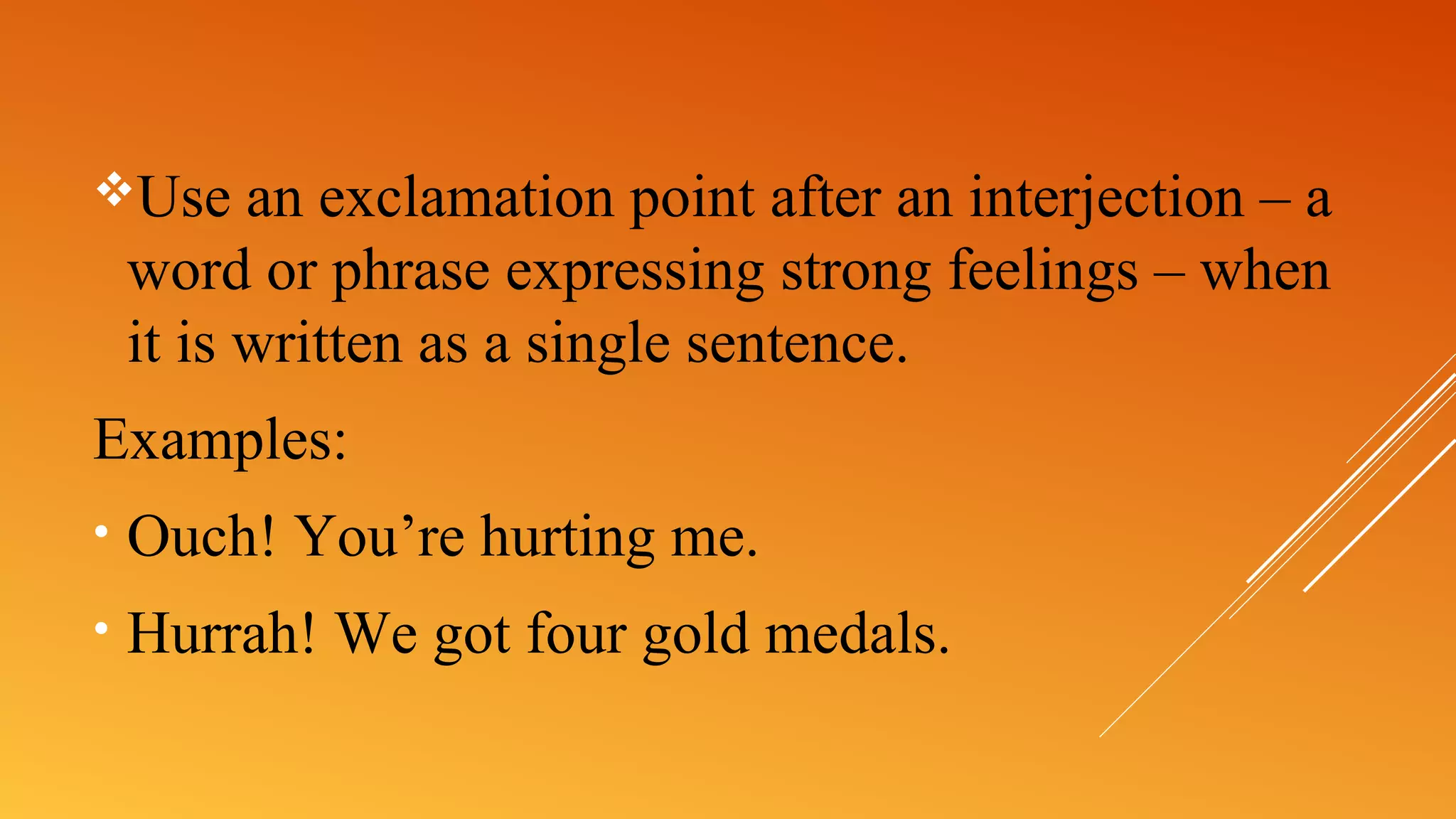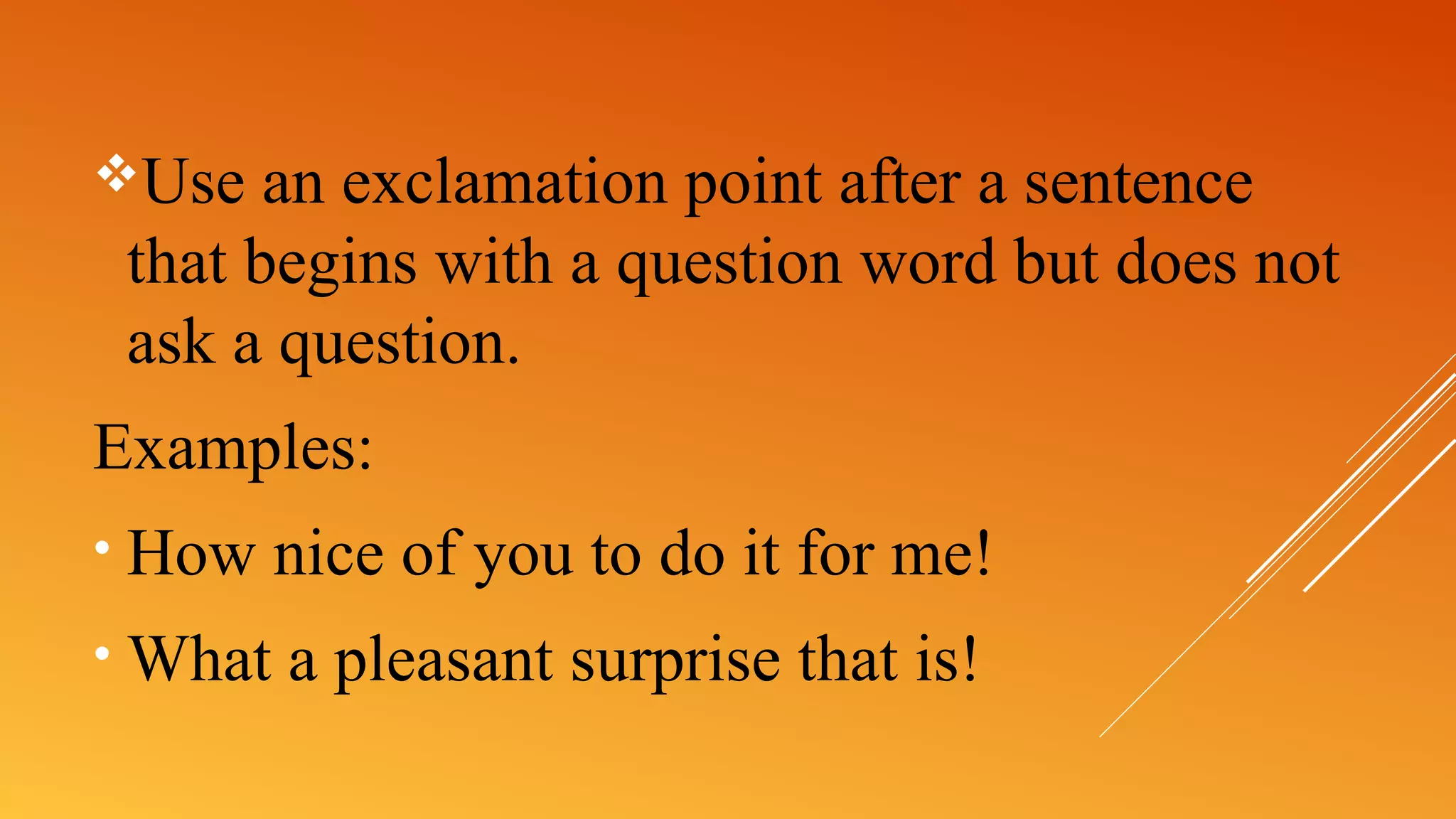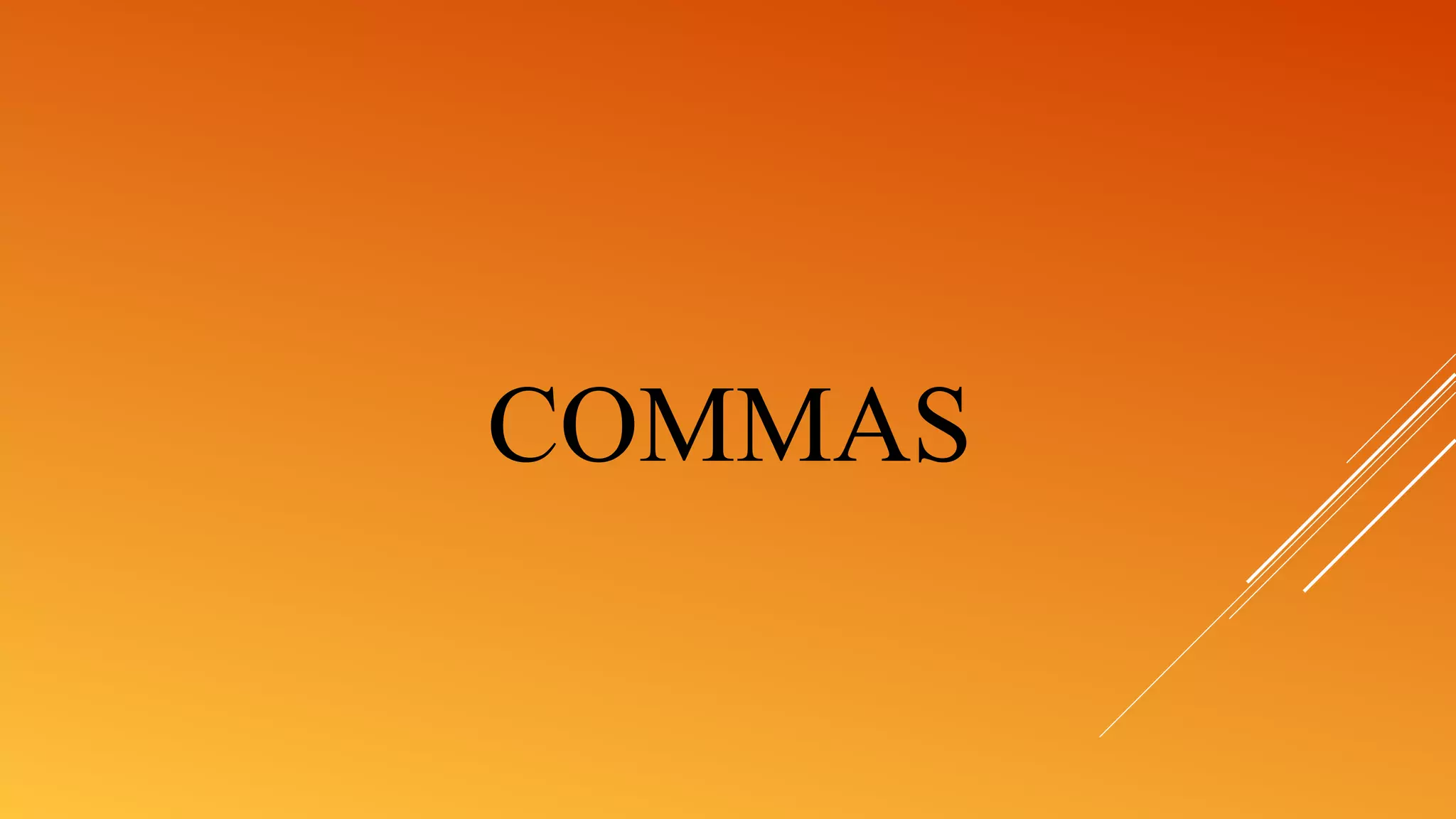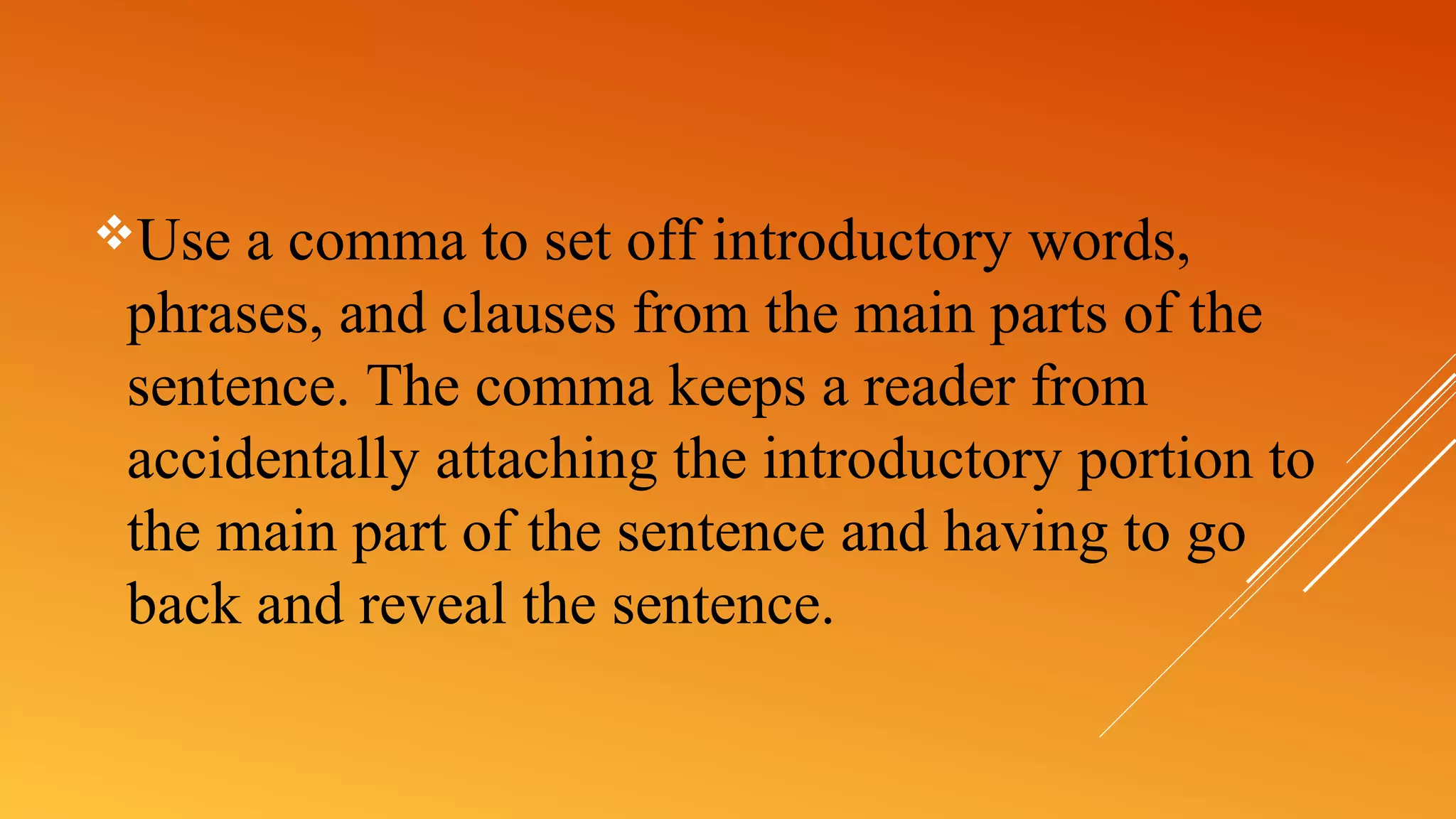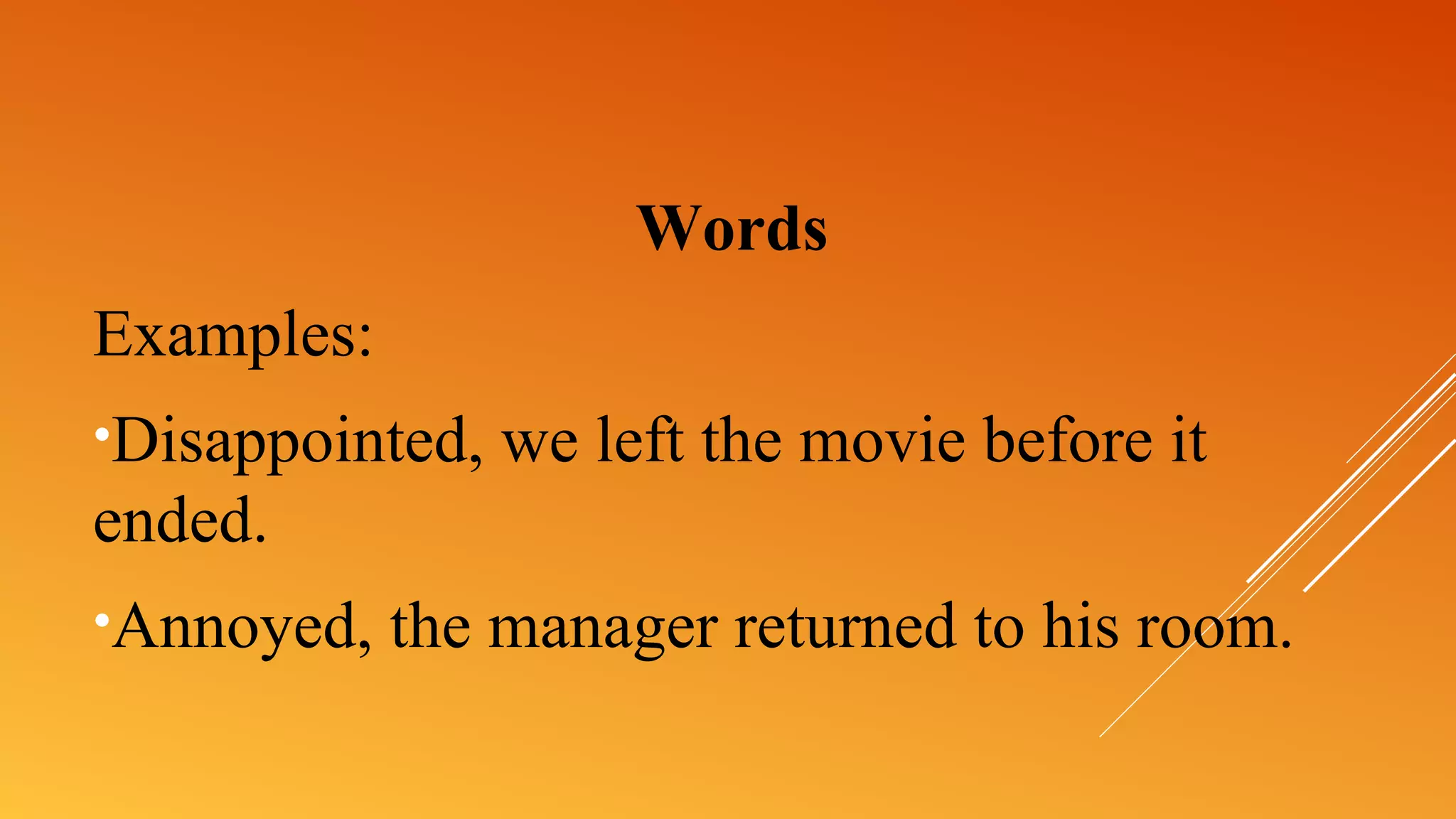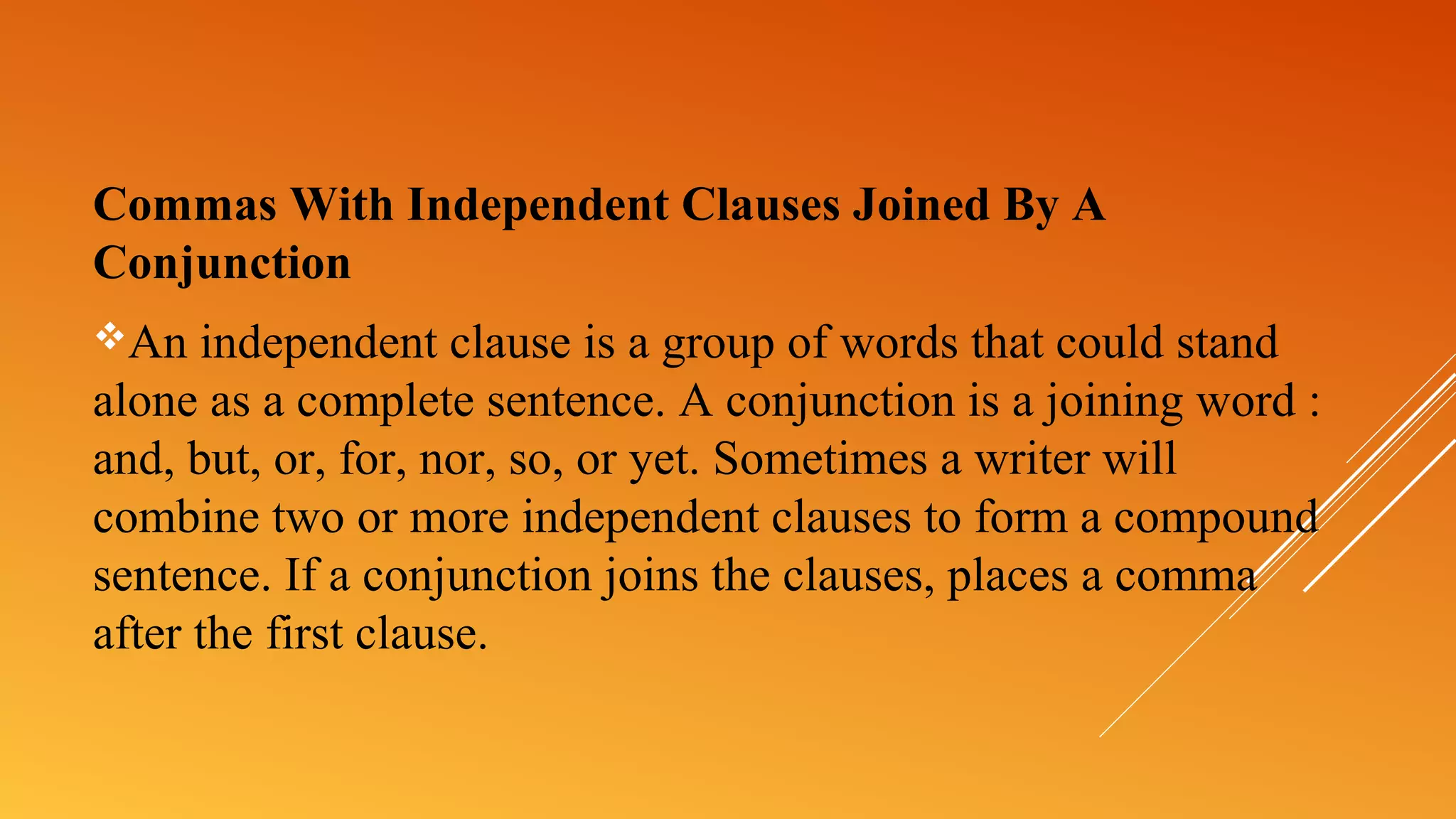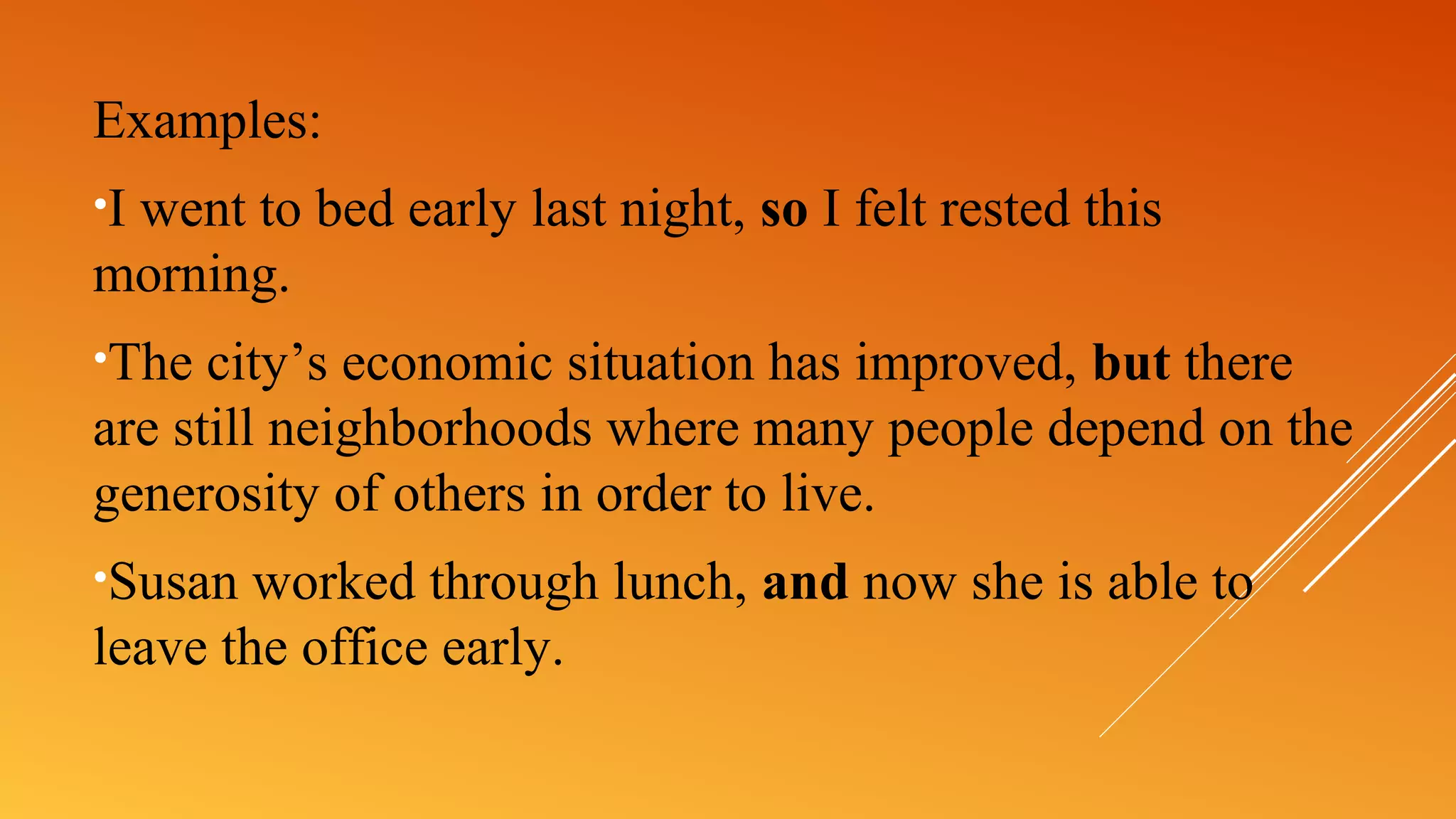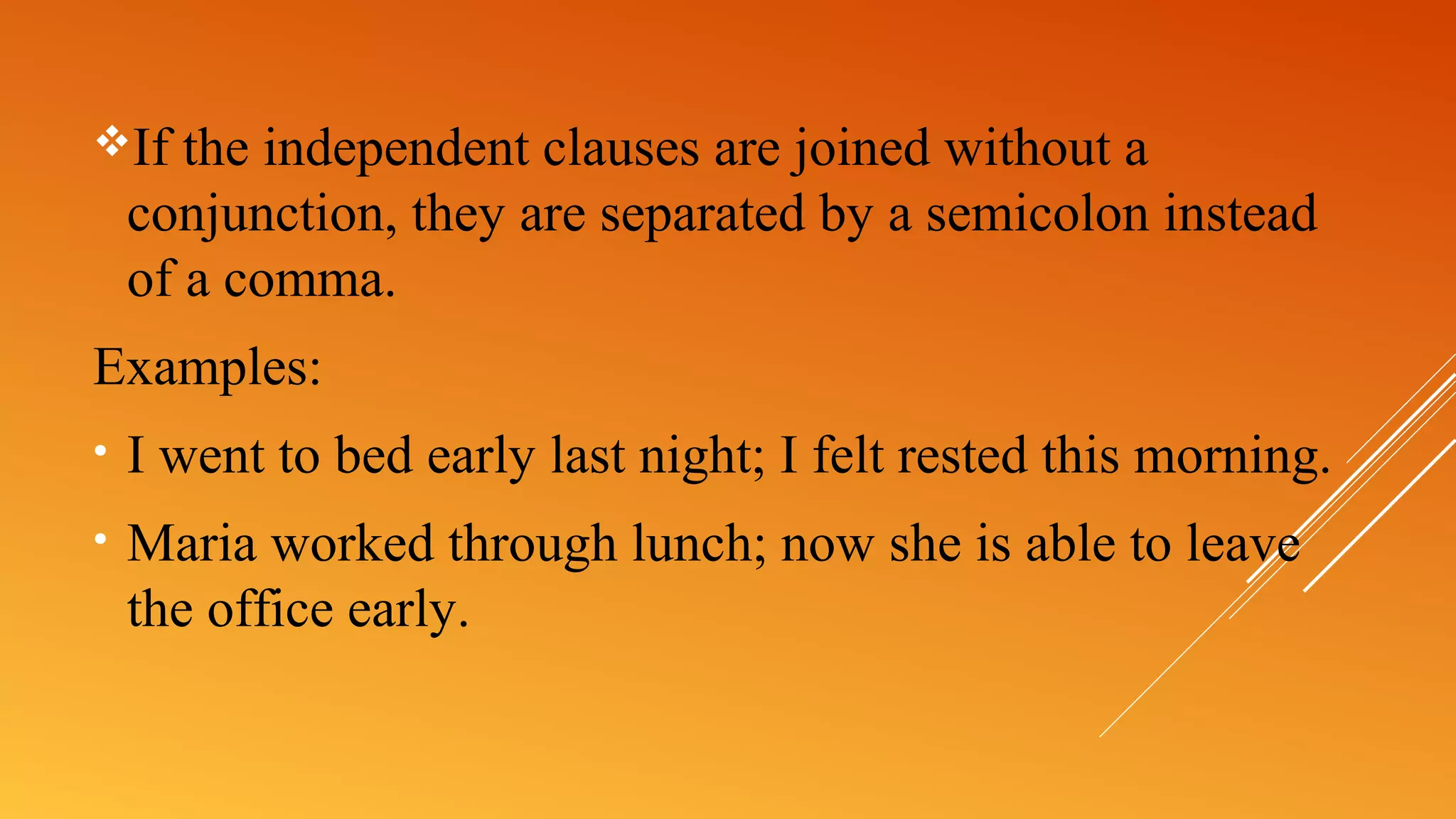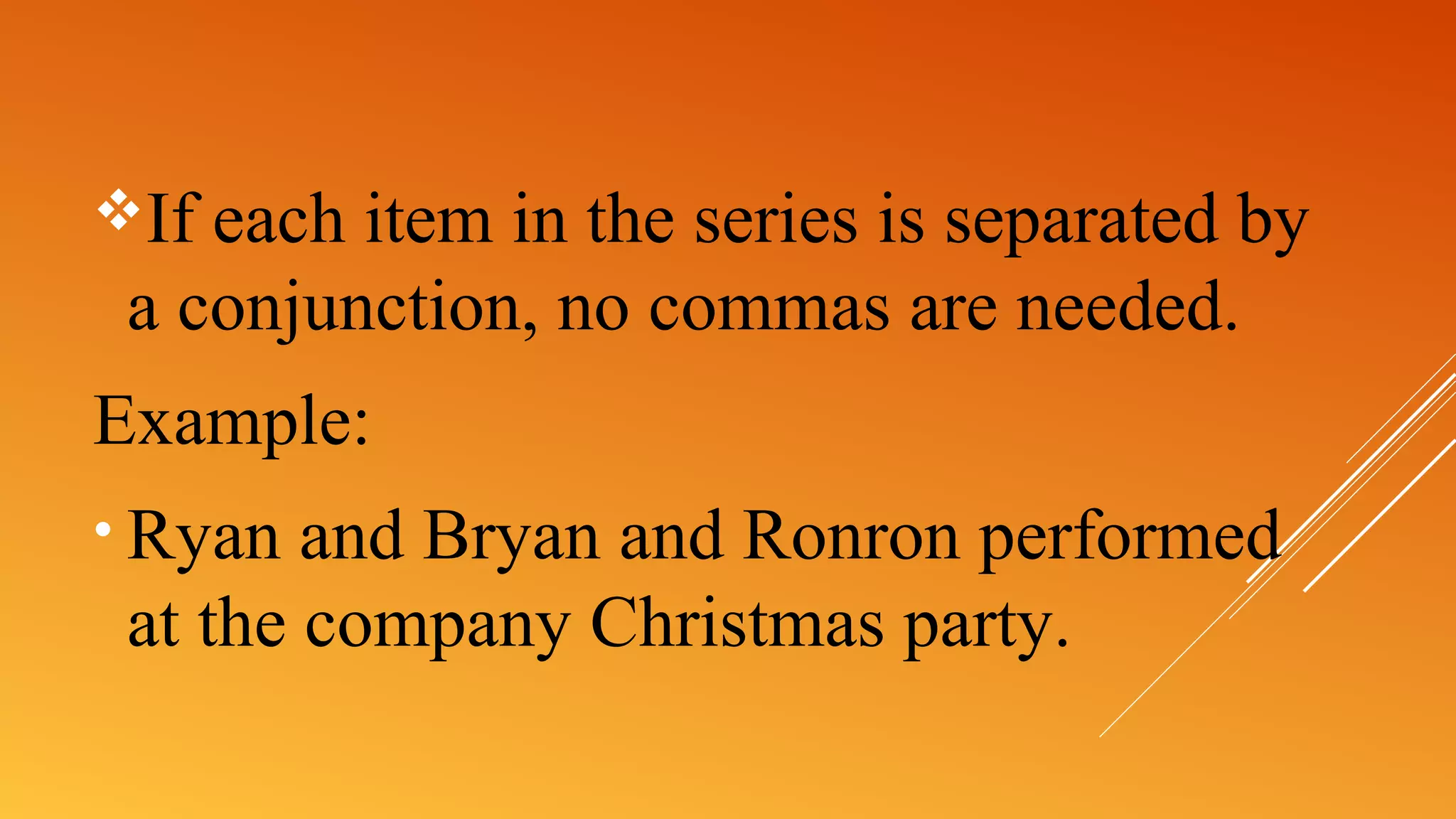Periods are used at the end of sentences, with abbreviations, before decimals, and between dollars and cents. Question marks and exclamation points are used to end questions and sentences expressing strong emotion. Commas are used to separate introductory phrases from the main clause, in appositives, with independent clauses joined by conjunctions, and to separate items in a series.
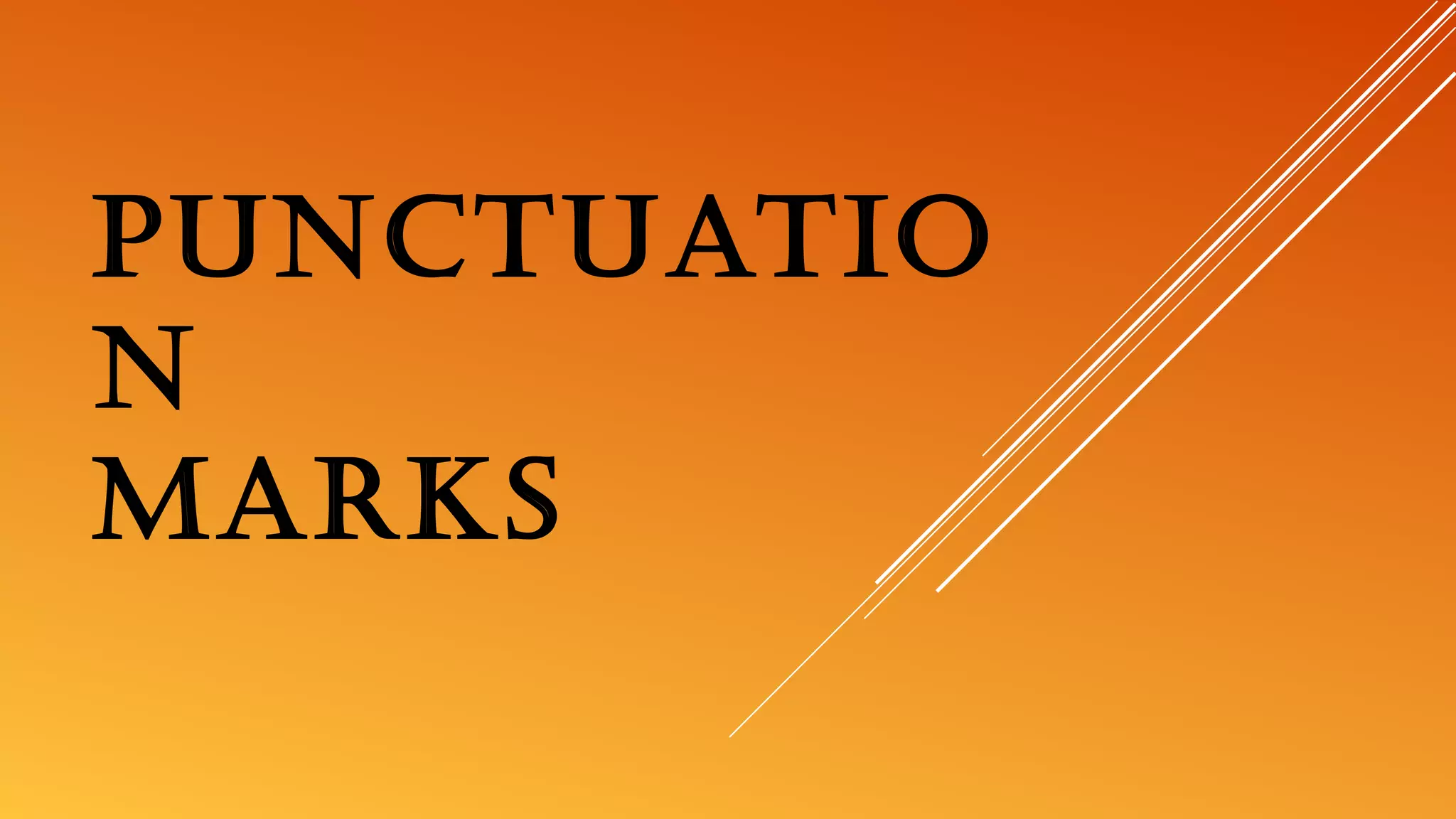

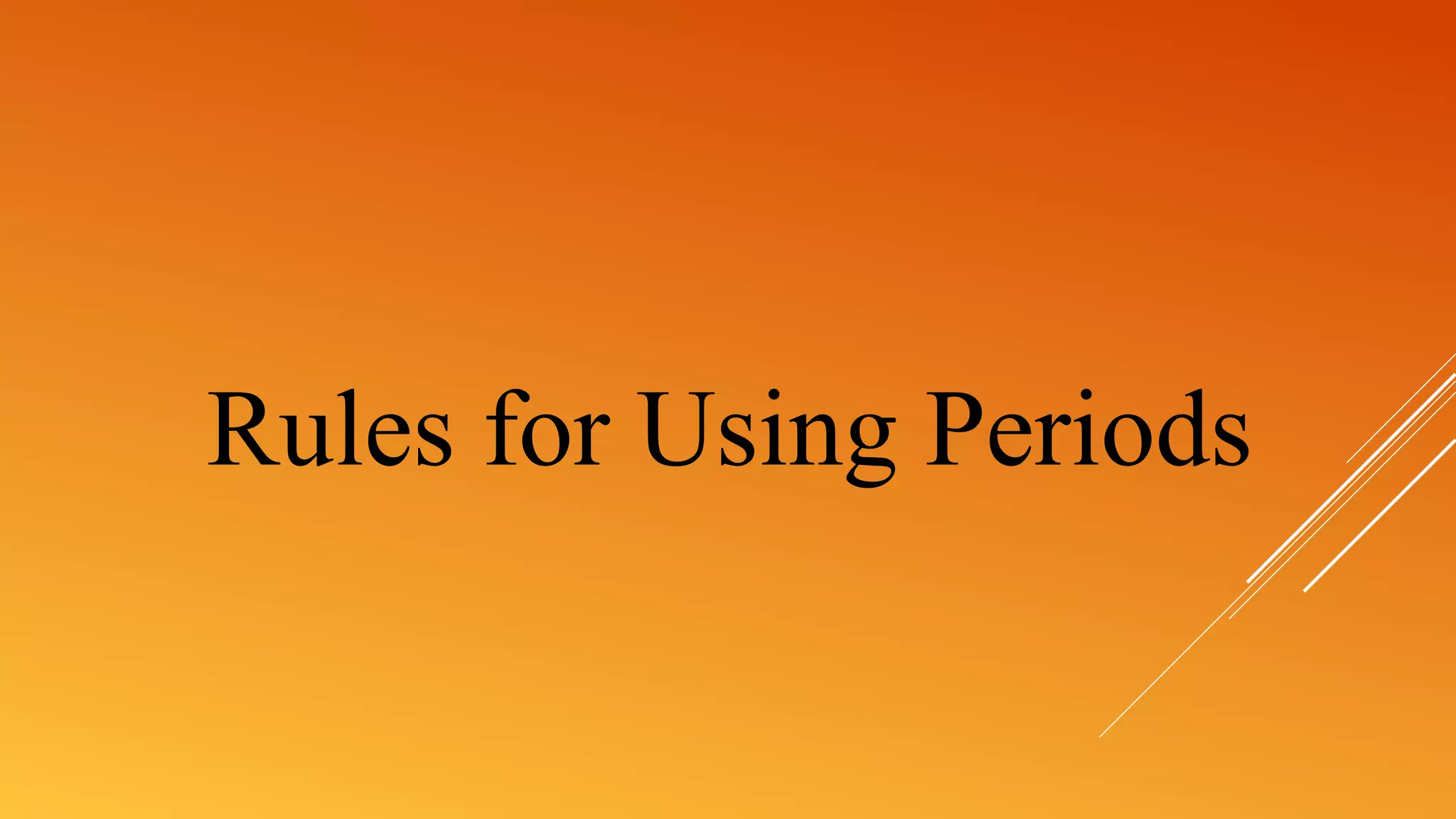
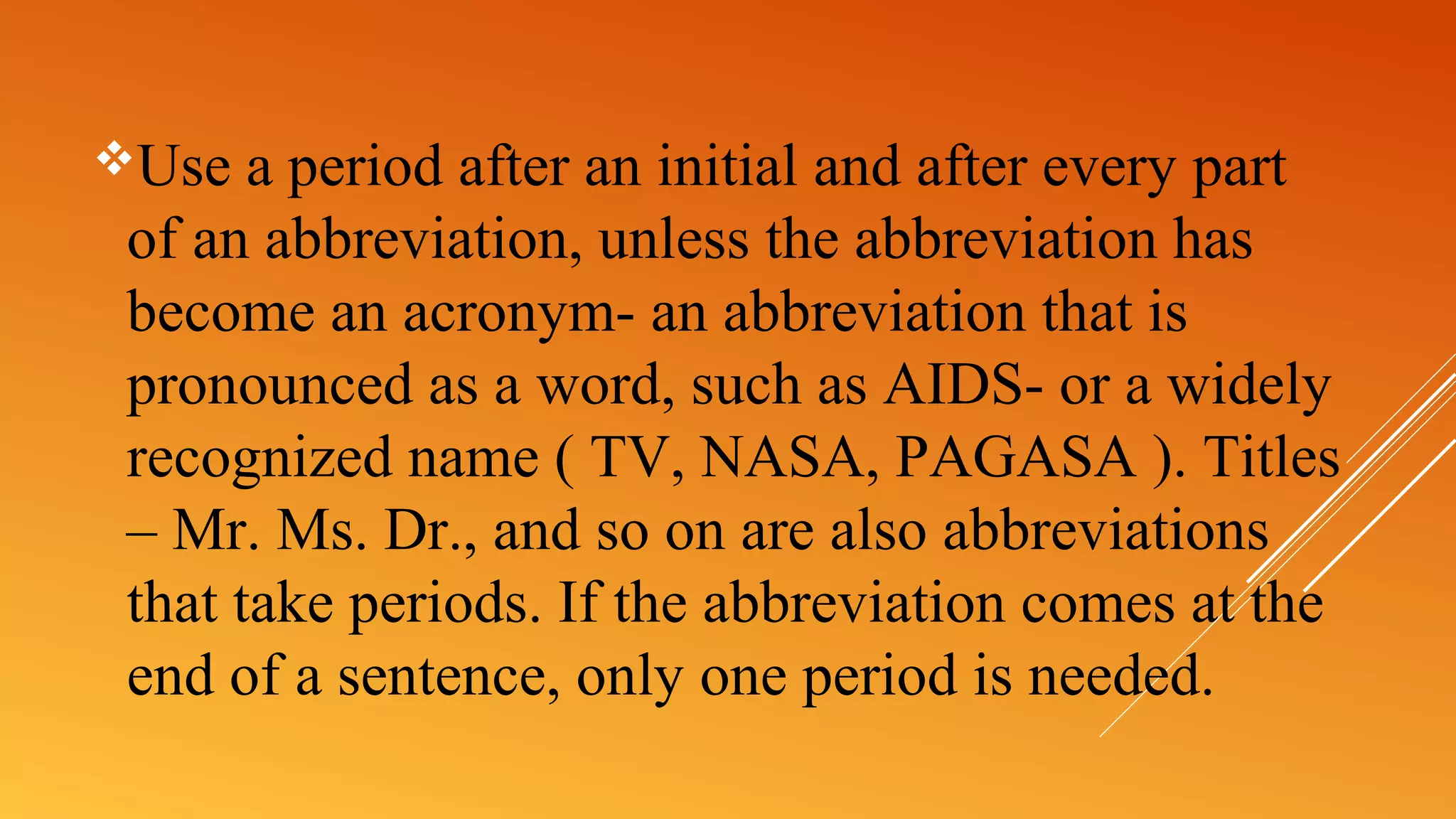
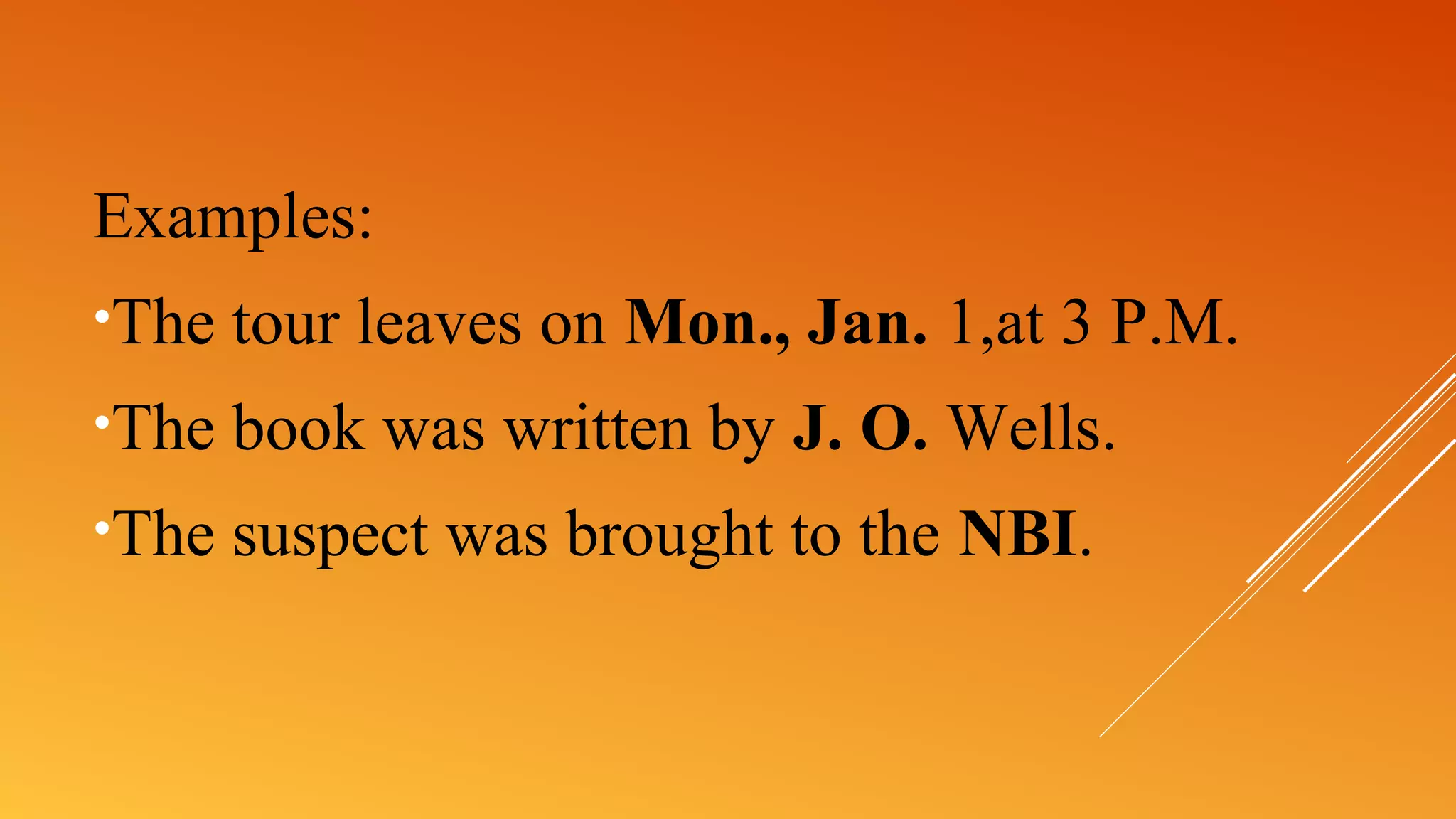
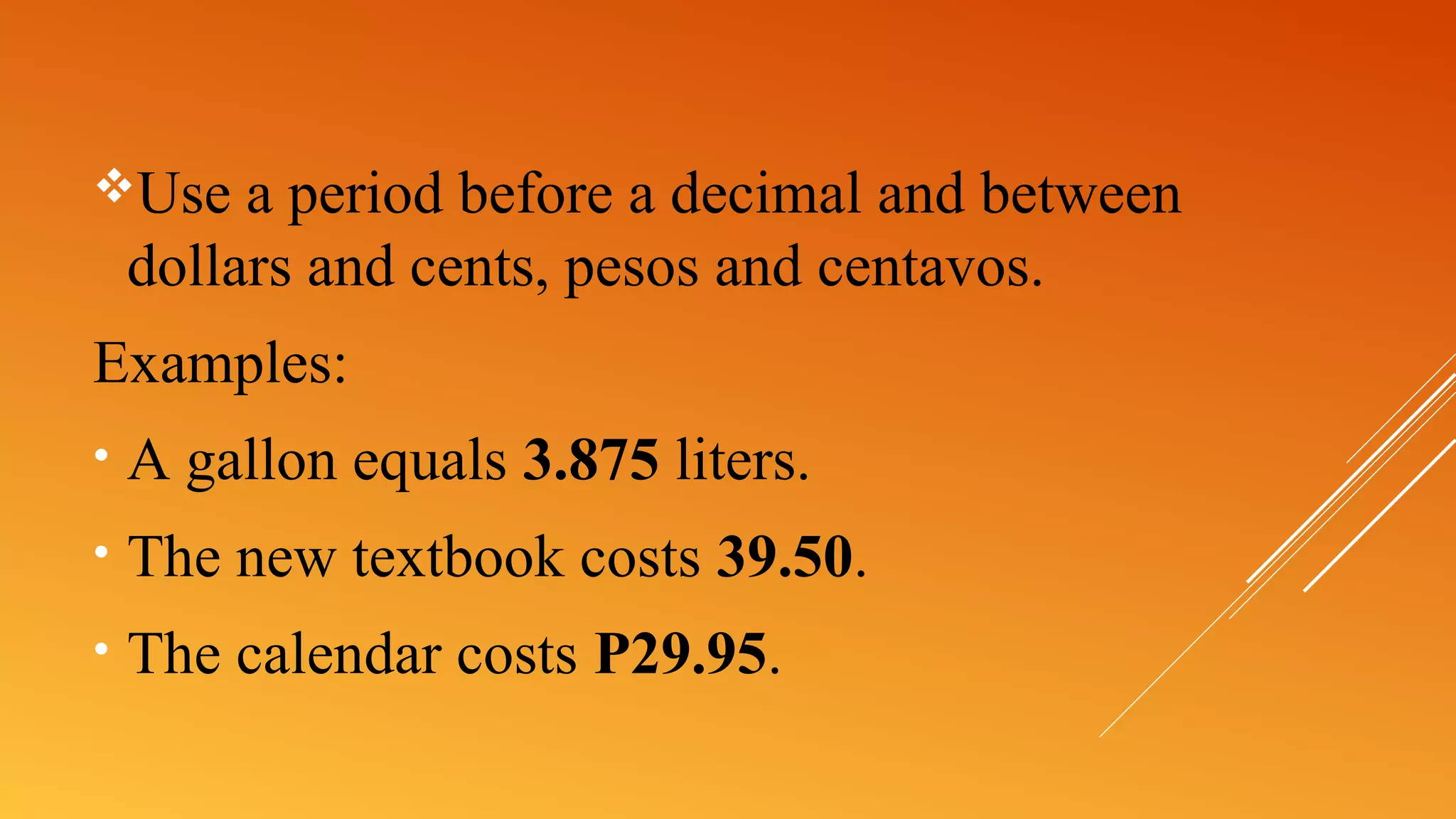
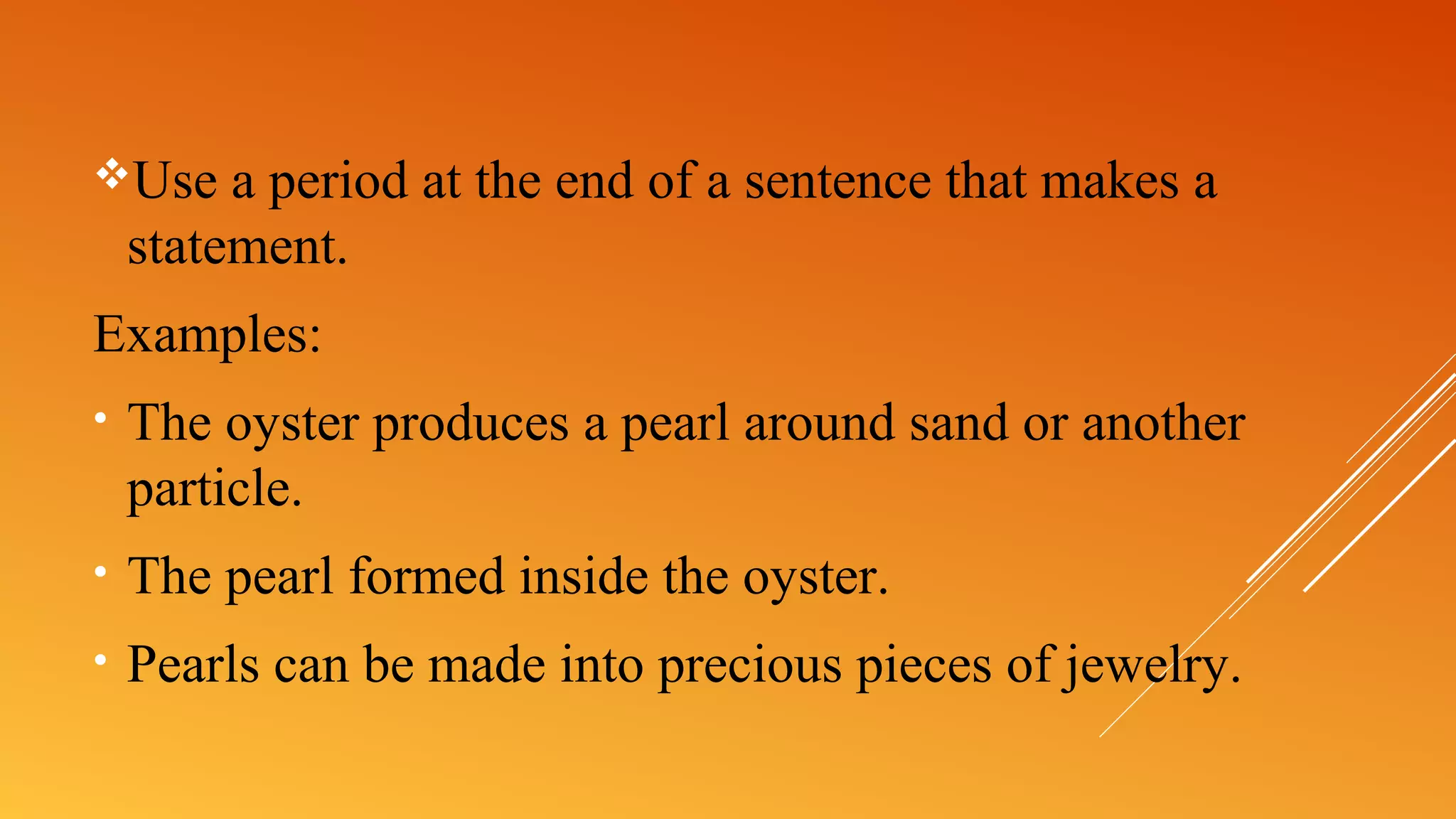
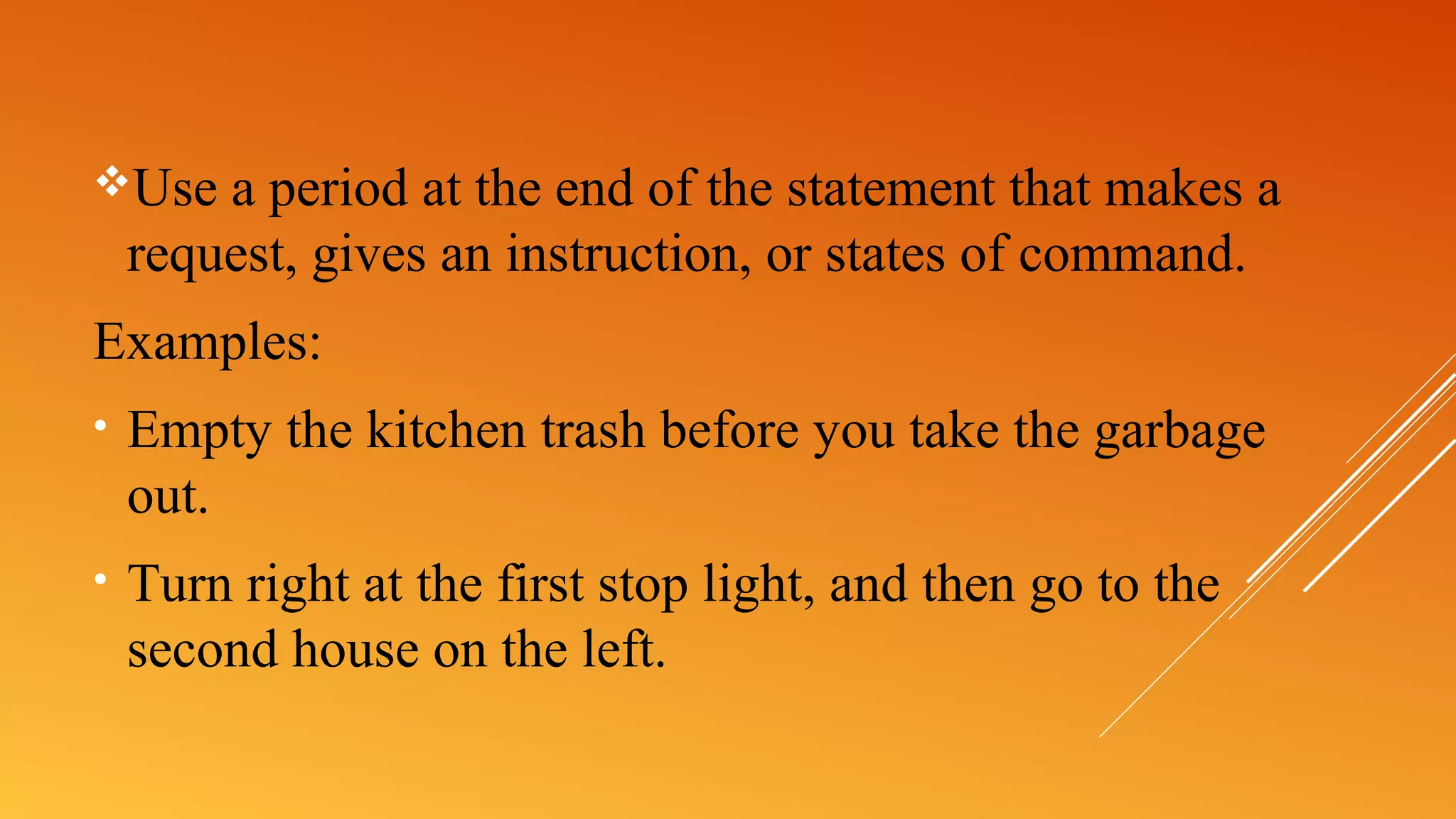
![Use a period at the end of a sentence that asks an indirect
question.
Examples:
• My neighbor asked if we had seen the cat.
[ The direct question was, “ Have you seen the cat?” ]
• Carrie wanted to know how we had arrived at the answer.
[ The direct question was, “How did you arrive at the
answer?” ]](https://image.slidesharecdn.com/punctuationmarks-150720111956-lva1-app6892/75/Punctuation-marks-9-2048.jpg)
